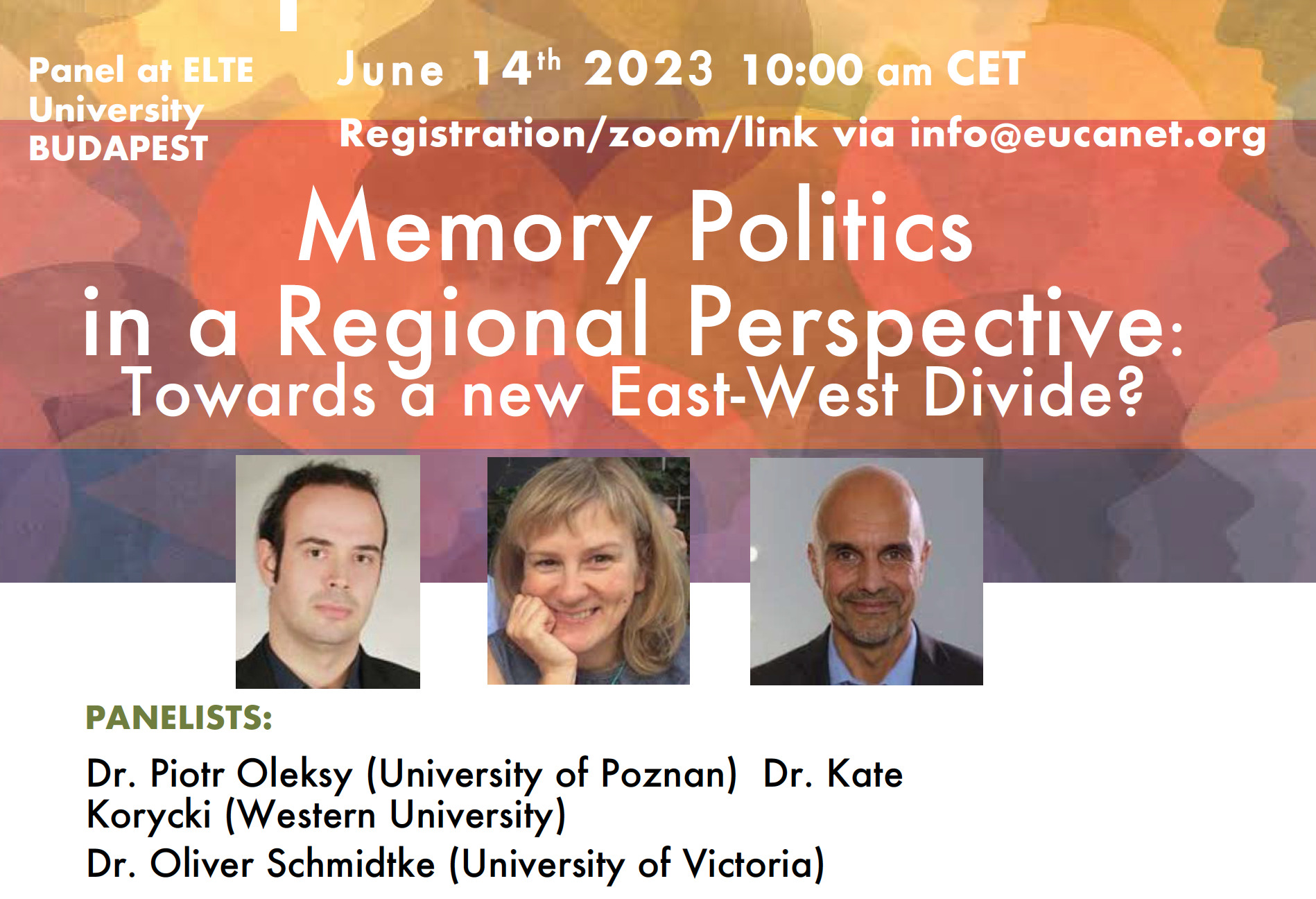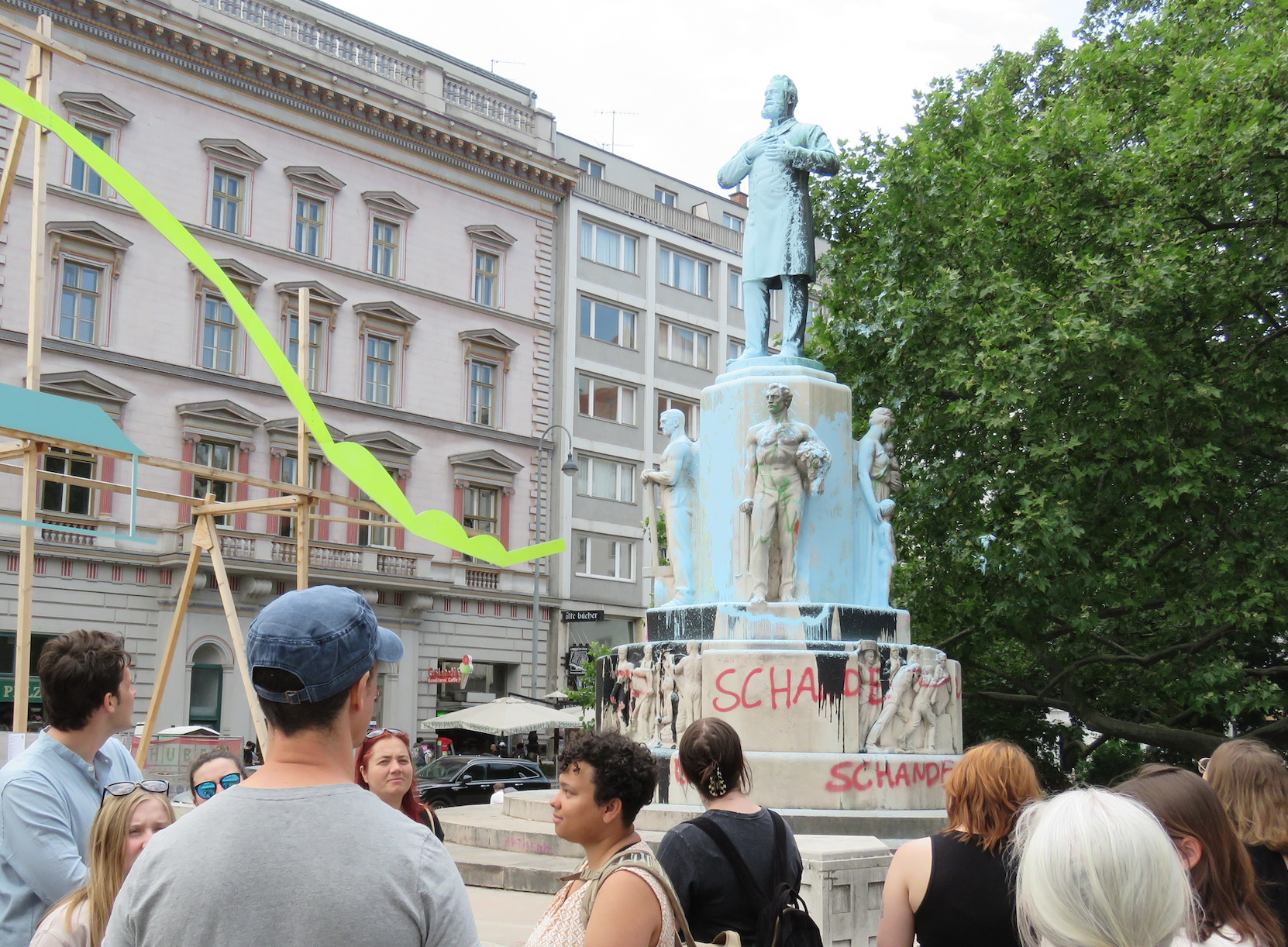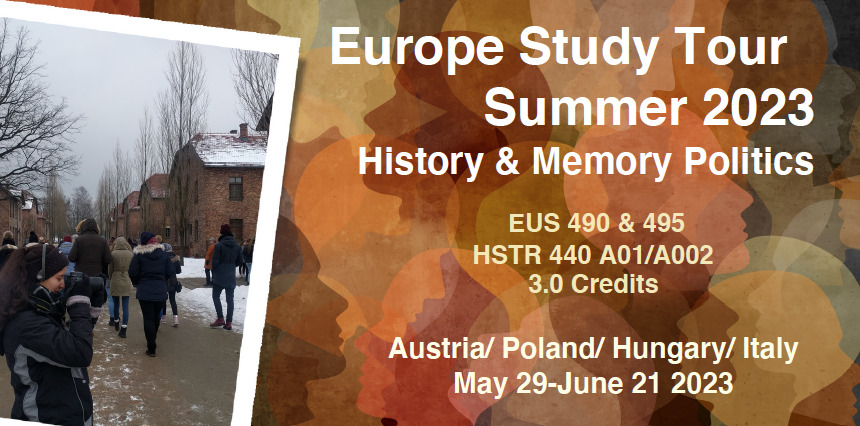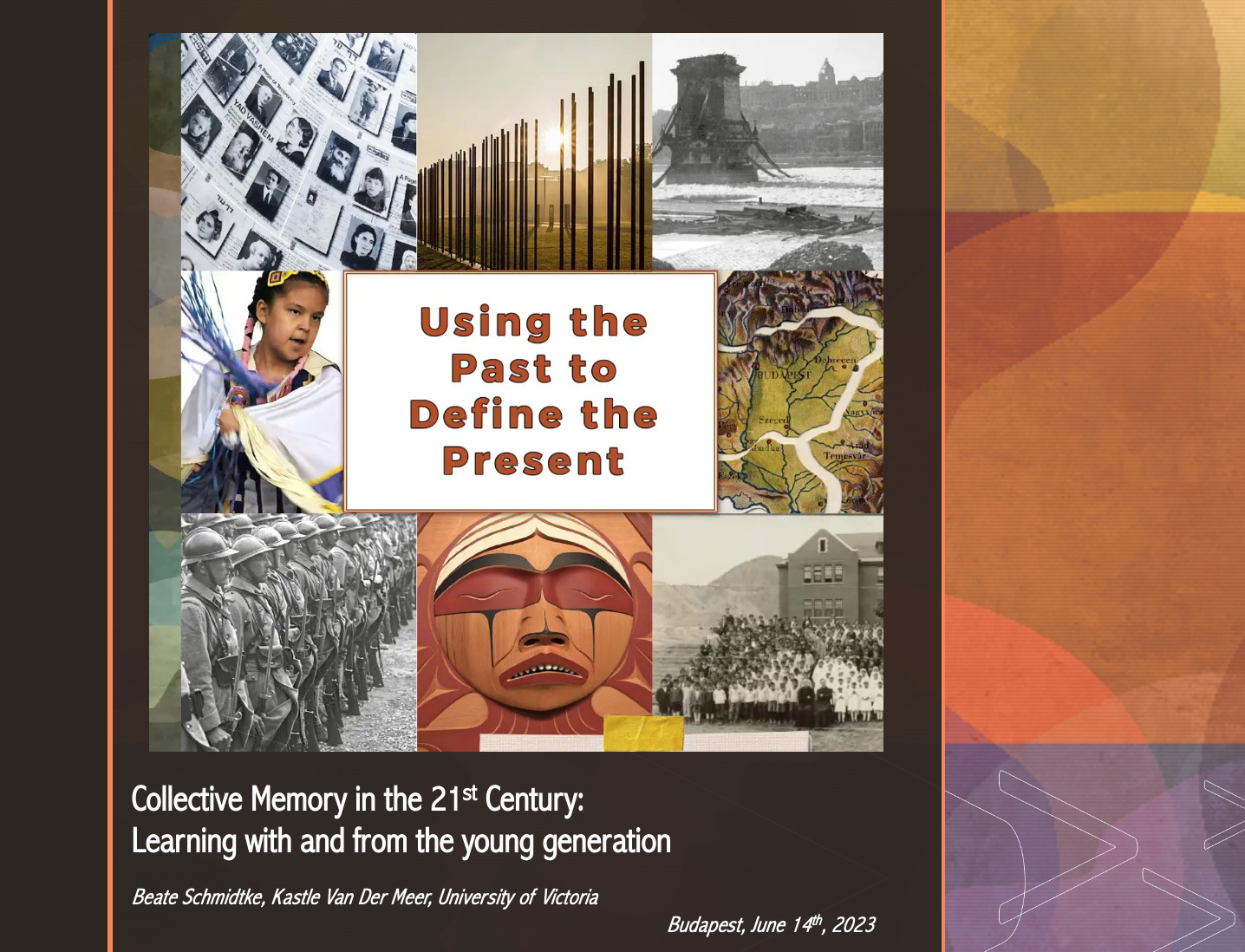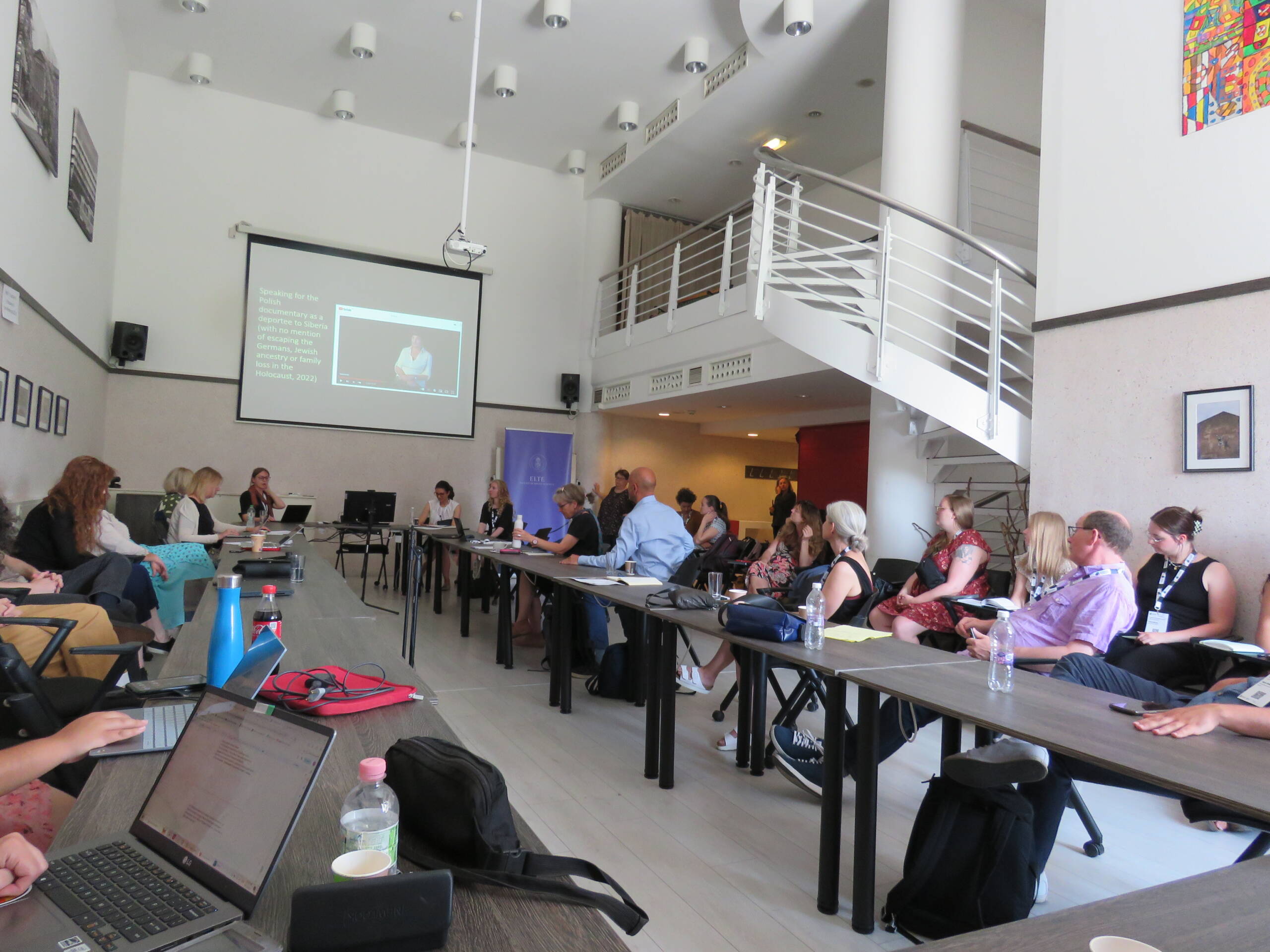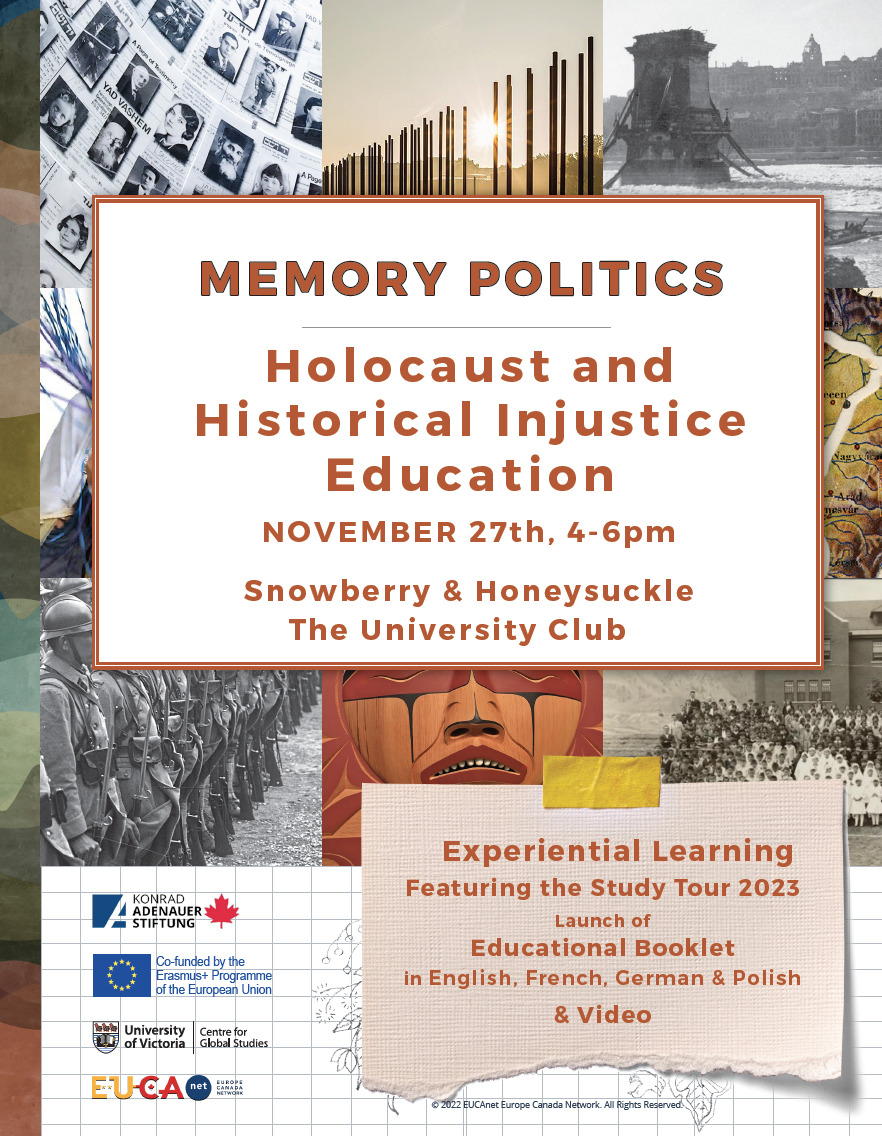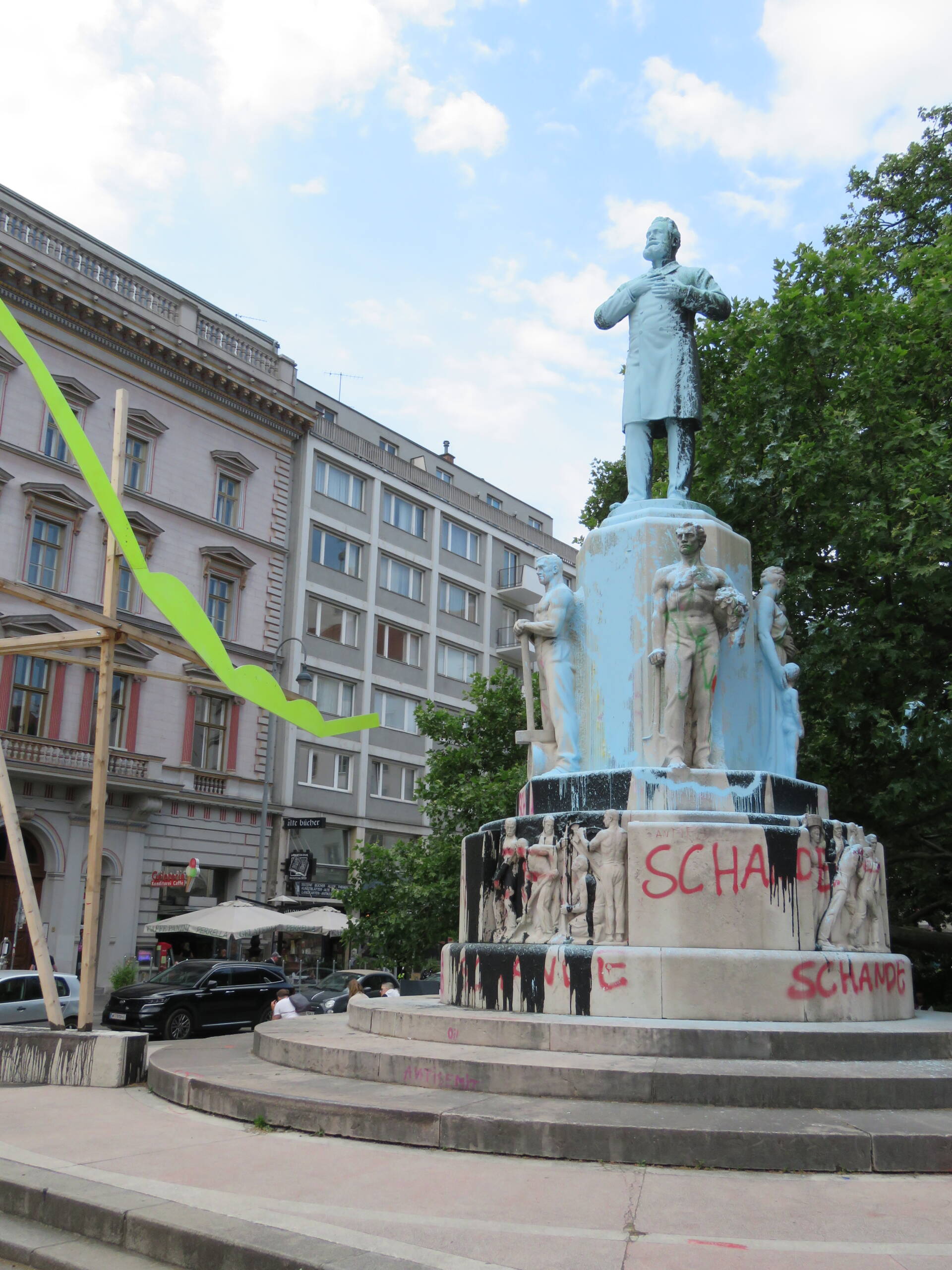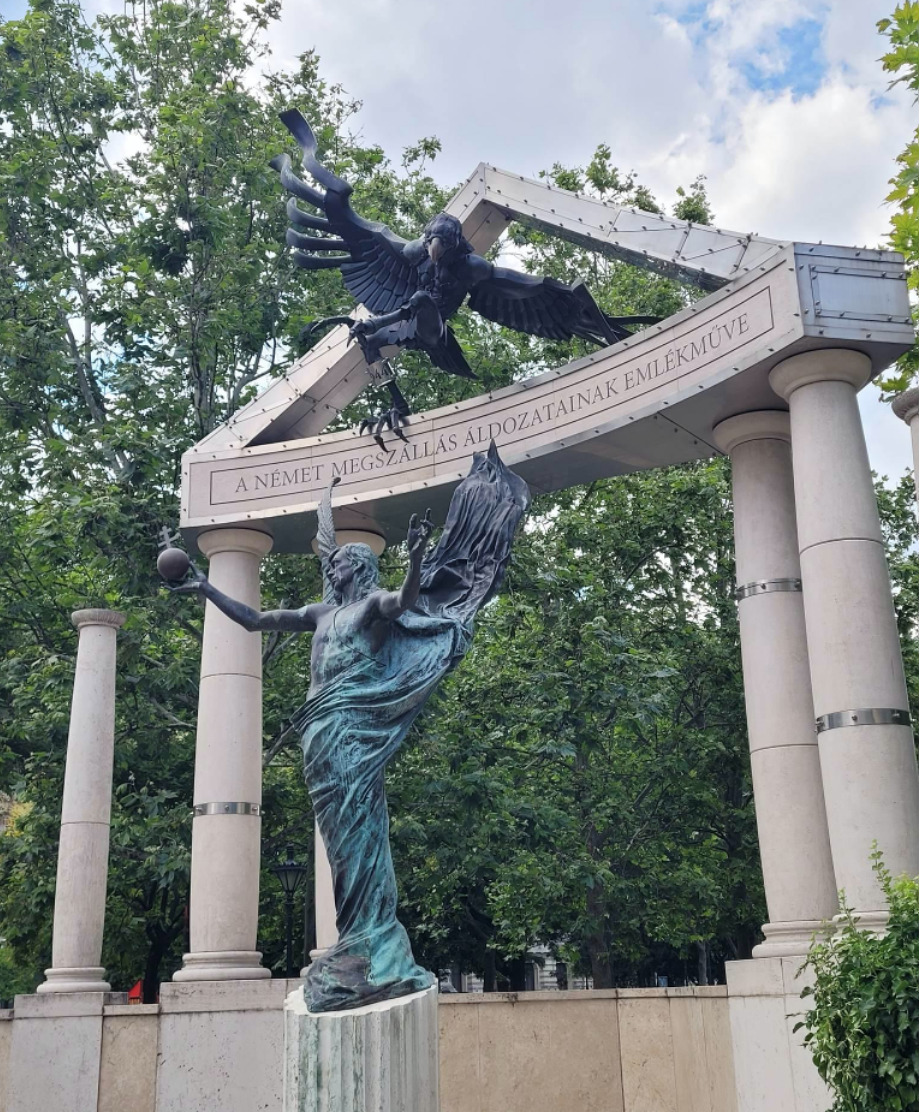Reliving History Through an IWalk: My Experience at a Memorial on the Danube River
Take a look at the photo below. What would you think if I told you that the people in this photograph were at a memorial commemorating victims of the Holocaust? How would you react? Each person is looking intently at their phone, rather than at the memorial — and they did so for nearly the entire hour that they were at this site. Do you feel angry that the people pictured are not looking at the memorial? Are you saddened that they feel so pulled toward technology that they are not present during a visit to a memorial to victims of the Holocaust? Maybe you are disappointed that these people fail to understand the gravity of the location they are at, or wonder what they even know about the memorial. If I had not been with this group, and in fact the photographer of this image, I might feel the same.
This image runs counter to what we think a photo of visitors to a Holocaust memorial should look like. Traditionally, engagement with these sites has taken place by viewing the memorial, reflecting on one’s thoughts and emotions, and perhaps listening to a live guide provide historical context. I think most of us would agree that this is a respectful way to engage with a memorial – and that staring at one’s phone is not. But what if I told you that the people in this photo are interacting with the memorial — virtually — by listening to survivor testimony and learning about the significance of the memorial site via an app? This is the reality: The people in this photo were participating in an IWalk put together by the Zachor Holocaust Remembrance Foundation [https://www.zachorfoundation.org/] and the USC Shoah Foundation [https://sfi.usc.edu/]. IWalks are a Holocaust education tool in the form of an app that guides users through historical Jewish districts and Holocaust memorials across Europe, Canada, and the United States. Each IWalk uses survivor testimony to connect personal stories with physical locations where events of the Holocaust took place. In the photo above, participants of the European Memory Politics Conference, which took place at Eötvös Loránd University in June 2023, visited a memorial in Budapest titled “The Shoes on the Danube Bank.” The memorial, which features sixty pairs of iron shoes, commemorates the thousands of Jews who were murdered in the winter of 1944-45 by members of the Arrow Cross Party, a fascist Hungarian political movement.
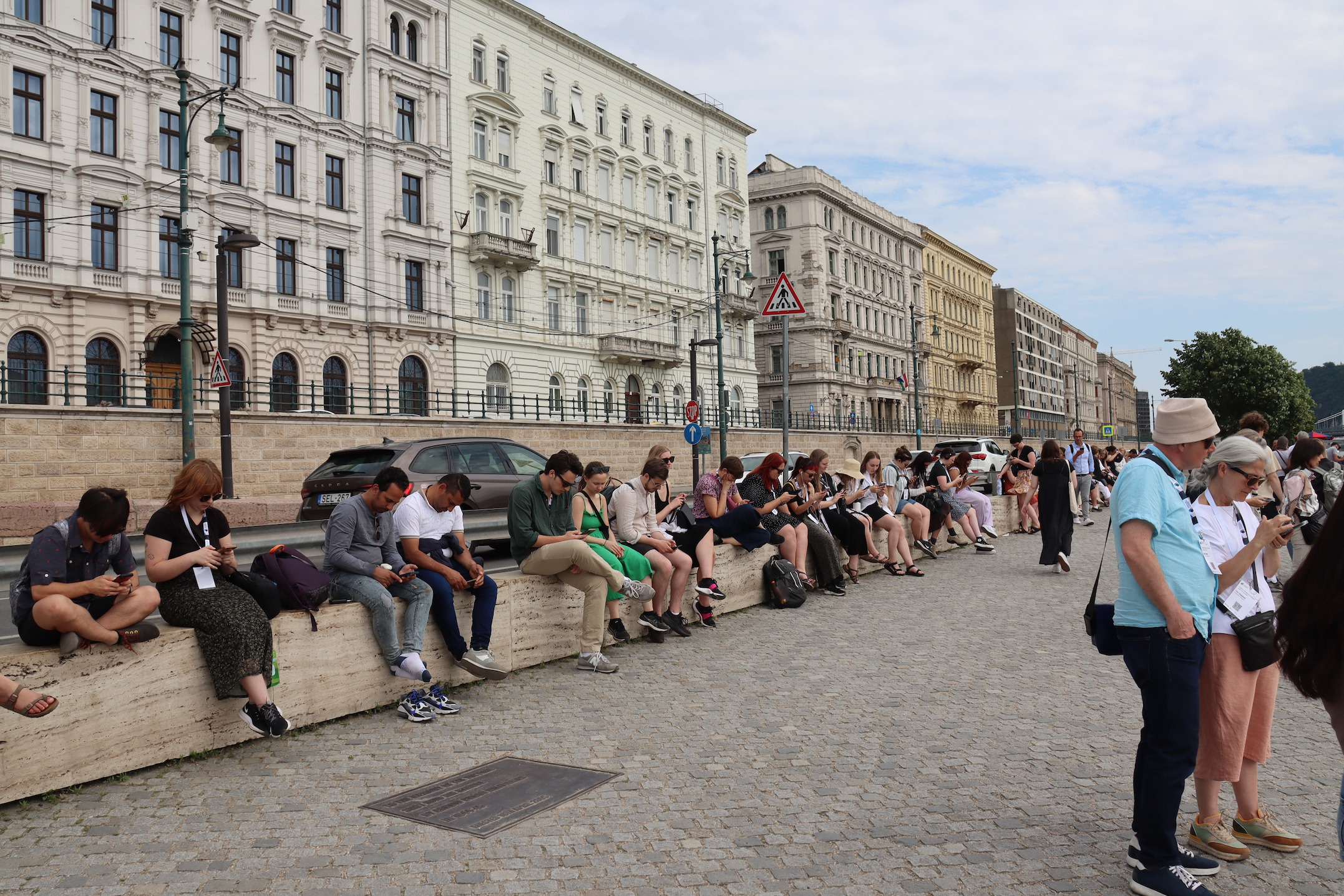
As a conference participant, I took part in this IWalk. Before the walk, participants downloaded an application titled ‘IWalk’ to their smartphones. From a list of Walks offered in Budapest, we selected an IWalk titled “Shoes Memorial on the Danube Bank.” Then, we made our way to the memorial. Here, we opened the app, popped in our headphones, and began this immersive experience. In this particular IWalk, the app invites users to experience and unpack the memorial in four different ways. First, users view the nearby memorial plaques. Then, users are guided to the memorial itself before being asked to think about the memorialization of this event. Finally, users are prompted to consider the role of the river in the context of the murders. As users walk along the river and examine the memorial, they are provided with facts about the killings and invited to listen to the testimony of four survivors. The app doesn’t just tell users about memorial, though. It also urges users to engage with this history by prompting them to answer various questions related to survivor testimony and the information it provides.
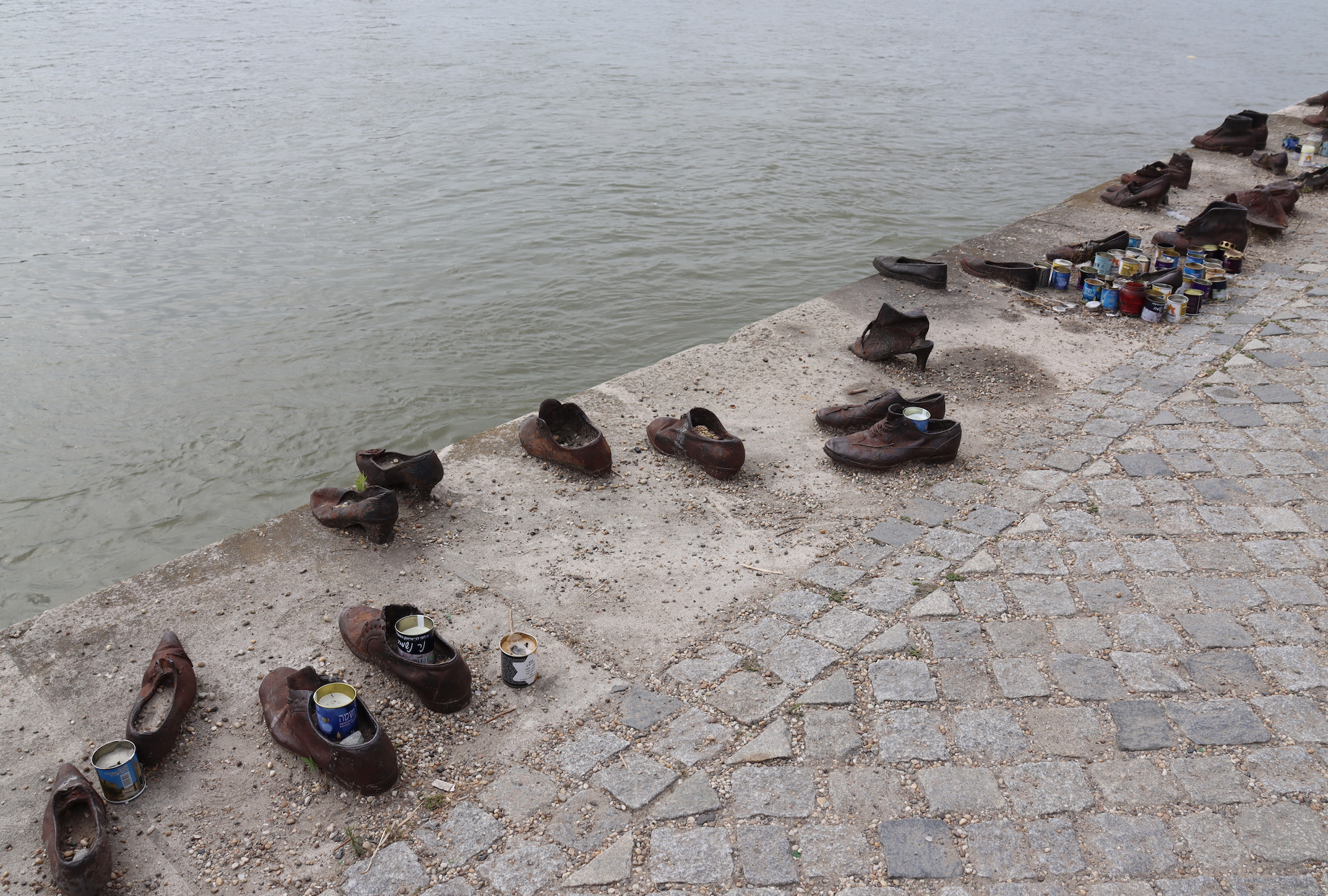
With the number of survivors dwindling, virtual testimony has become one of the most accessible ways to interact with Holocaust survivors and bear witness to the brutality they experienced. The USC Shoah Foundation has thousands of digital testimonies available online through its Visual History Archive [https://vha.usc.edu/home], and it offers educators a plethora of teaching resources centered around this testimony. However, as knowledge of the Holocaust among youth decreases and our lives become increasingly online, new ways of integrating digital testimony into classrooms and beyond has become a main priority for organizations such as the Shoah Foundation and the Zachor Foundation. IWalks are an innovative way for learners of all ages to engage with the Holocaust both digitally and at a local level. IWalks are particulary effective because they do not just throw information at users — they use the words of survivors to teach and engage learners in an authentic way.
I have listened to hundreds of survivor testimonies and visited countless Holocaust memorials across Europe. Each testimony moves me, and I am often overcome with emotion at these sites. However, listening to the testimony of those who survived a massacre at the very place you are standing is an almost indescribable feeling. In this way, IWalks don’t just teach about the Holocaust — they also immerse users in the past. IWalks use survivors’ words to encourage users to think about why the crimes of the Holocaust occurred, how they were carried out, and what those who experienced such crimes experienced.
After the IWalk, conference-goers participated in a discussion about our experience. It was interesting to hear which part of the IWalk my colleagues found most impactful and why. We were all touched by different aspects of the memorial and agreed that our experiences were greatly enhanced by the IWalk. I found that experiencing the IWalk on my own, listening to a survivor recount their story while standing at the site it occurred, was one of the most powerful encounters I have ever had.
It is one thing to visit a site of memory; it is quite another to visit a site and hear the words of a survivor while standing in the exact spot that they once stood. IWalks are an excellent example of how technology can bring us closer to history. If you are looking for ways to teach the Holocaust, or would like to be more engaged with the Holocaust at a local level, I encourage you to download this interactive app [https://apps.apple.com/us/app/iwalk-usc-shoah-foundation/id1176057571] and see if there are any IWalks in your area. I have no doubt that you will find the experience as moving as I did.
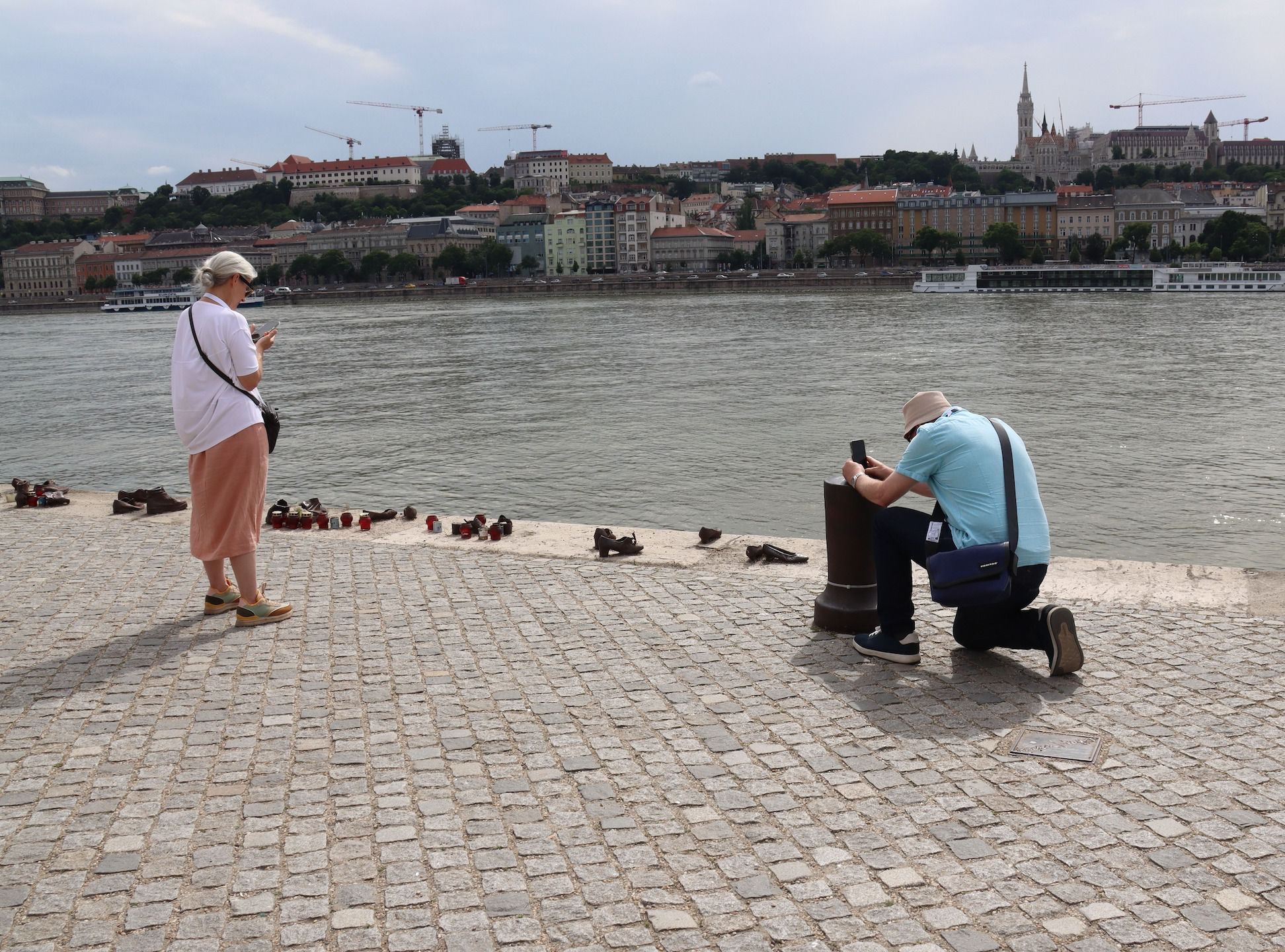
Kästle Van Der Meer graduated from the University of Victoria’s History MA program in November 2022. Her thesis research under the supervision of Dr. Kristin Semmens investigated Jewish resistance to sexualized violence in Nazi forced labour, concentration, and death camps. Reflecting her BA in Gender Studies and History, Kästle’s other research interests include gender and sexuality in the Holocaust. Kästle currently works an instructor in the Academic and Technical Writing program at UVic.
